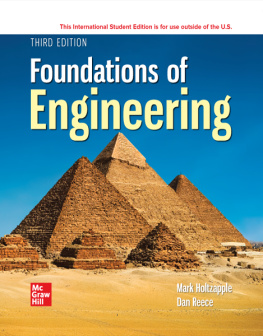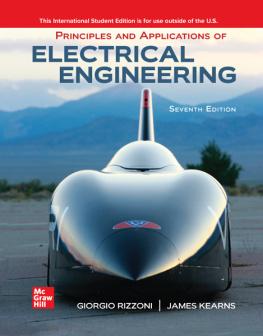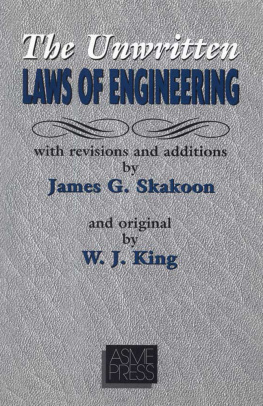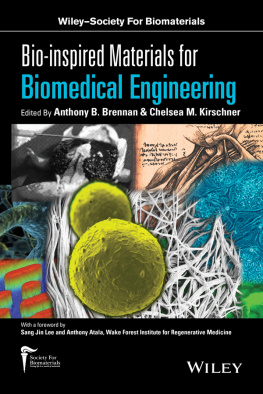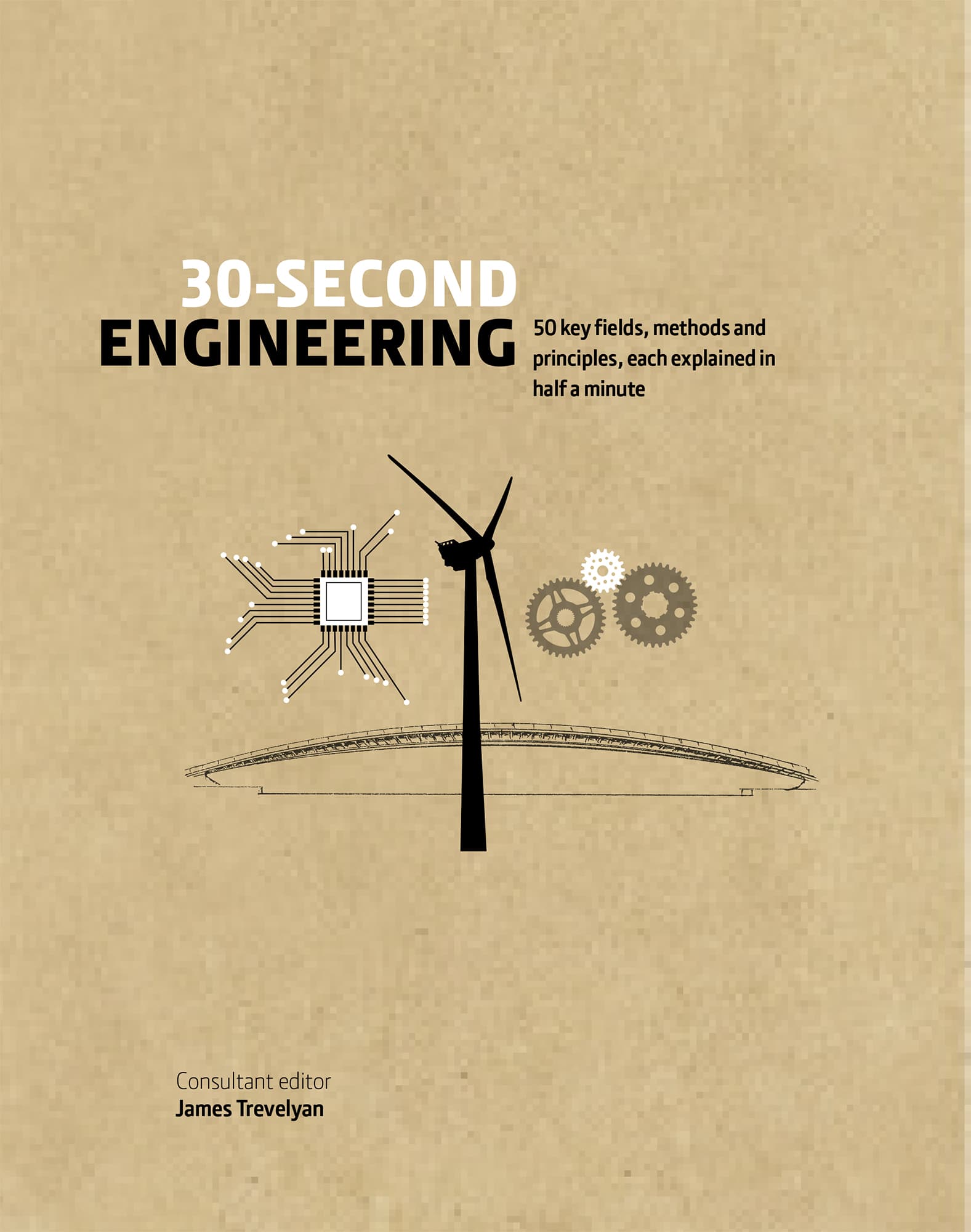30-SECOND
ENGINEERING
50 key fields, methods and principles, each explained in half a minute
Editor
James Trevelyan
Contributors
Roma Agrawal
John Blake
Colin Brown
George Catalano
Doug Cooper
Kate Disney
Roger Hadgraft
Jan Hayes
Marlene Kanga
Gong Ke
John Krupczak
Raj Kurup
Julia Lamborn
Andrew McVeigh
Sen Moran
Paul Newman
Hung Nguyen
Jenn Stroud Rossmann
Veena Sahajwalla
Toms A. Sancho
Jonathan Scott
Tim Sercombe
Paul Shearing
Donglu Shi
Matthew L. Smith
Jorge Spitalnik
Neill Stansbury
Illustrations
Nicky Ackland-Snow

INTRODUCTION
James Trevelyan
Almost everything we see, feel, touch, eat or drink entails engineering: engineering is fundamental for human civilization, and engineers are the people with the core technical ideas and knowledge.
Yet, engineering itself is a mysterious profession. Many imagine engineers designing and performing complicated mathematical calculations. Some engineers do that, but very few spend much time on it. Others think that engineers build bridges and make cars. However, few engineers would know how to fix a car, let alone work with tools on a bridge. Of course, locomotive engineers drive trains in America, but in this book you will read about engineers as members of a knowledge-based profession.
The best way to appreciate engineering is to understand what engineers really do, and recent research has greatly expanded our knowledge of this. Even with the enormous variety that comes with the near-300 specialized engineering fields that exist today, there is remarkable similarity in the work of engineers, everywhere. Most engineers rely on a handful of common ideas and methods, explained in the first section of this book.
So, what do engineers do? In a few words, they are people with technical knowledge and foresight who conceive, deliver, operate and sustain man-made objects and systems that enable people to do more with less effort, time, materials, energy, uncertainty, health risk and environmental disturbances.
Safety is the primary concern for engineers. When accidents occur, engineers learn from mistakes and improve standards as a way of passing on experience.
Organizing their work into specific projects, in the first phase, engineers conceive safe solutions for human needs and predict how well these solutions will operate and the cost to build, operate, sustain and, eventually, remove them. There are always uncertainties: engineers inform investors about risks and consequences. Sufficient trust and confidence need to be gained before investors are willing to commit finance for project execution, the second phase, long before benefits from the project will arise.
Often working in large teams, engineers plan, organize and teach people to purchase and deliver components, tools and materials, and then transform, fabricate and assemble them to deliver the intended solution. They work with an agreed schedule and budget, handling unpredictable events that influence progress, performance, safety or the environment. Later, they organize sustainment: operations, upgrades, maintenance and repairs. In the final phase, engineers plan and organize removal and disposal, environmental restoration, reuse, refurbishment or even recycling of the materials.
Expectations need to be satisfied well enough for investors to come back and commission more projects. Most of an engineers time is spent coordinating collaborative efforts by skilled people, guided by shared technical knowledge. Engineering successes often reflect the combined performances of tens (or even hundreds) of engineers and thousands of other people worldwide, building on decades of experience. Technical work, such as predicting performance, designing and solving problems, takes up much less time.
Engineers strive to create highly reliable products, and endure great uncertainty and anxiety when testing them in extreme conditions.
Certainty is impossible with unpredictable activities by so many people combined with natural variations in materials and the environment. Yet engineers have developed systematic methods that provide amazing predictability. A century ago, few people watching the hair-raising exploits of aviation pioneers could have imagined the amazing safety and reliability of modern air travel.
Invention and innovation is a fundamental ethos in engineering, tempered by accumulated knowledge and standard methods shaped by past experiences. Another guiding principle is the ethical duty not to cause loss, harm or suffering, and to avoid wasting resources. Engineers tend to honour ethical obligations for utilitarian reasons because effective collaboration is based on trust from clients, contractors and employees. They work in small communities news of a breach spreads fast. Codes of ethics and societal regulation dating back to the Code of Hammurabi, thousands of years ago, help to shape conscientious efforts by engineers who produce many of humanitys most durable achievements. A social licence representing trust from government, regulators and local communities also eases collaboration.
Traditionally a culturally diverse male-dominated profession, women are gradually making their presence felt, especially in fields like biomedical, environmental, food processing and chemical engineering. Many firms recognize the value of diversity and are now actively seek to recruit and retain female engineers, and are creating more inclusive workplaces.
Improved sensing technology helps create public awareness of pollution, creating social pressure on companies that enables engineers to create better solutions.
Some have argued that future computers with artificial intelligence (AI) will perform many of todays engineering jobs. So far, the main results from AI have been to improve IT system performance, providing engineers with faster access to appropriate information and enabling more effective robots. Forecasts that robots and AI would eliminate factory work, for example, proved to be premature. Yet computer systems, often with AI components, do help to enormously extend human capabilities.


